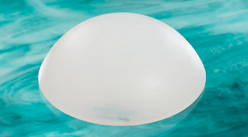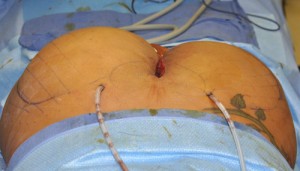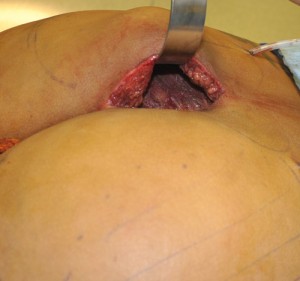The use of implants is one effective method for buttock augmentation. It is far surpassed by fat injections (aka Brazilian Butt Lift, BBL) in number of buttock enhancements done, however, due to the appeal and usual availability of adequate fat to harvest to do the procedure. The exact numbers are not known but I would estimate that for every 25 to 50 BBL surgeries done in the U.S., only several buttock implant procedures are done. It is probably a 10:1 ratio of BBL to implant surgeries.
But the tremendous rise of BBL surgeries has also led to an increase in buttock implant surgeries. This is because some people are not good candidates for fat injections because they do not have an adequate donor source of material. There may also be some ‘failures’ in BBL surgeries due to fat absorption and minimal augmentation outcomes as a result.

Like breast implants, there are two locations in which the buttock implants can be placed. Buttock implants can be placed either intramuscular (not beneath but inside the gluteus maximus muscle) or subfascial. (above the gluteus maximus muscle) There are advantages and disadvantages to either implant location. Neither implant location is necessarily better than the other and each patient must be considered individually based on their buttock shape, tissue thickness and their buttock enhancement goals.

Intramuscular buttock implants is becoming a more common surgical technique but it is still done far less than subfascial buttock implants. It has the advantages of providing good vascularized tissue coverage of the implants and has a lower risk of infection and seroma formation as a result. Because the implants are placed deep, one can still have fat injections done above them for further augmentation later if desired. Its disadvantages are that it is a more ‘complex’ surgical technique to master and its is more painful with a more difficult recovery in the first few weeks after surgery. Its most limiting aspect is that the intramuscular space offers only a limited capacity to handle implant size with the upper limits in the 300cc to 350cc range.
Buttock implants will never rival fat injections but they have a significamt role to play in buttock augmentation. They remain as the only option for those patients that have inadequate fat stores for the BBL procedure.
Dr. Barry Eppley
Indianapolis, Indiana



